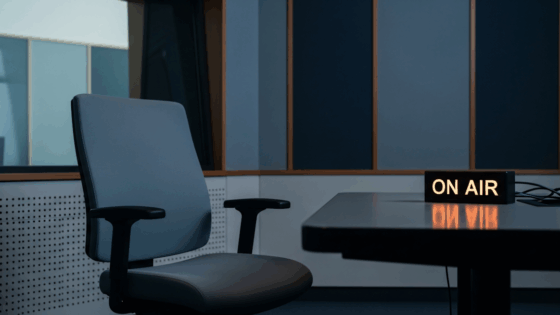on
BY SIMONE J. SMITH
The power of art lies in its ability to connect, inspire, and transform. It has the power to shape our individual and collective experiences, challenge societal norms, and contribute to personal growth and cultural development. Art continues to be an essential and influential aspect of human existence. It continues to ignite imagination and inspire new ideas. Art will move you and evoke a wide range of emotions, from joy and awe to sadness and contemplation.
Art serves as a universal language that transcends barriers of culture, language, and time. It allows individuals to express their thoughts, ideas, and experiences in a way that can be understood and appreciated by others. It successfully communicates messages and narratives that may be difficult to convey through other means.
It was why I decided to trek all the way down to Cambridge to check out an exhibit titled, “To Build What We Become When We Dream.” I had received a message a few months ago from Katrina Coombs, an incredible textile artist from Jamaica, letting me know that her work was going to be displayed at this exhibit. Three months later, I finally made my way down, and it was well worth the drive.
Curated by Sarah-Tai Black, “To Build What We Become When We Dream” brings together Black women artists working across and amongst geocultural multitudes. Taking its name from activist and writer Nikki Giovanni’s poem “Word Poem” (Perhaps Worth Considering), this exhibition acknowledges Black feminine artistic creation as a radical means for shaping worlds imagined otherwise. Their fiber-based works and techniques explore both abstract and figurative forms, offering a model of Black women’s aesthetic practices as diasporic devices of communion, repair, and intervention.
The artistic practices shared here refuse the expectation of self-abandonment and the conditions of the world as it is, centering instead an embodied dedication to oneself and one’s kin as realized through space, form, color, and tactility. A continuation of the freedom work of those who came before us, the artists offer a clarification of what abundance and care might look like in an otherwise inhospitable climate. Together, they are a prescient reminder that dreaming is a form of knowledge production and that the practice of liberation is inextricable from envisioning worlds with an unconditional capacity for love.
“To Build What We Become When We Dream” was a collaboration between McMaster Museum of Art and Cambridge Art Galleries as part of the McMaster Museum of Art’s BIPOC Mentorship program. The program was generously supported by funds from the Department of Canadian Heritage and the Office of the Provost, McMaster University.
The incredible artists included:
Nnenna Okore
Throughout her long career as an artist-researcher-teacher, she has focused on ecological issues steeped in artistic practice, pedagogy, and social engagements. In her most recent art projects, she uses bioplastics and environmentally friendly materials to create her artworks. Her works have been featured in major exhibitions at: the Museum of Art and Design, NY; Museum of Contemporary African Diasporic Art, New York; Spelman Museum of Fine Art, Atlanta; Museu Afro Brasil, São Paulo, Brazil; Memphis Brooks Museum of Art, and the Cleveland Museum of Art, among others. Okore’s recent exhibitions include the Bruges Triennial Exhibition, Belgium, and the Chengdu International Biennial in China.
Chason Adjoa Nana Yeboah-Brown
She is a self-taught: textile sculptor, doll maker and story-teller, exploring the oscillation of ancestral ritual through reconstructed, (un)woven and crocheted structures. Many of her works directly focus on themes of shame, loss of identity, sexuality, the notion and practice of “self-love”, hybridity, energy transference, and acknowledgement of the human form, with a primary focus on marginalized humans.
Katrina Coombs
She holds a MFA in Creative Practice from Transart Institute via the University of Plymouth. Her passion for fiber and an uncanny understanding of the sensitivity of threads and fabric are used to formulate designs and sculptural forms that relate to the human body, and especially that of the maternal figure, both physically and conceptually.
Ever the consistent creator, Coombs has been awarded grants from the National Performance Network (New Orleans) and the CATAPULT initiative (Jamaica), as well as fellowships with the Caribbean Cultural Center African Diaspora Institute (New York) and The Jamaica Art Society (New York). She has also participated in several residencies globally, such as: the Fountainhead Residency with Diaspora Vibe Cultural Incubator (Miami), the Gilbertsville Expressive Movement Artist Residency (New York), and the Davidoff Artist Residency (Bogota, Colombia).
Her work has been featured in numerous exhibitions in: Kingston, Manila, Berlin, New York, Bogota, Miami, Sarasota, Kentucky, Chicago, Washington, Carolina, and Ontario.
I had a chance to catch up with Katrina who I found out was in Brazil at a two-month residency.
“Being out here has given me a chance to focus on creating pieces. Life can get busy, and I haven’t been able to give undivided attention to my work. Being out here is helpful because all I have is time for my work.”
“Amazing Katrina! Thank you for sharing “To Build What We Become When We Dream” with me. It was an extraordinary experience, but Katrina. How did your work end up here in Cambridge, Ontario?”
“The curator reached out to me. It was a random message saying that she saw my work circulating, and she made note of me. She reached out and I was like, let’s see how it goes.
I was surprised. It is good to know that my artwork has reached a global level. I heard the reception was great and the opening was incredible.
I have to step out of the traditional space of a Black artist. It has allowed me to infiltrate spaces that you would not find a Black artist. My work has begun to affirm me; the spaces in Jamaica are still very clique. It feels good to be able to express myself freely without judgment. I intended to stay rooted at home, but I am constantly stretching my wings. I love having the ability to share my artwork with the world.”
Exhibits like this show that art can serve as a catalyst for change and inspire people to question and challenge existing systems and ideologies. I am proud of Katrina, and the other artists for expanding their artistic reach, and showing the world all that Black Girl Power!
Stay in the loop with exclusive news, stories, and insights—delivered straight to your inbox. No fluff, just real content that matters. Sign up today!
We, as humans are guaranteed certain things in life: stressors, taxes, bills and death are the first thoughts that pop to mind. It is not uncommon that many people find a hard time dealing with these daily life stressors, and at times will find themselves losing control over their lives. Simone Jennifer Smith’s great passion is using the gifts that have been given to her, to help educate her clients on how to live meaningful lives. The Hear to Help Team consists of powerfully motivated individuals, who like Simone, see that there is a need in this world; a need for real connection. As the founder and Director of Hear 2 Help, Simone leads a team that goes out into the community day to day, servicing families with their educational, legal and mental health needs.Her dedication shows in her Toronto Caribbean newspaper articles, and in her role as a host on the TCN TV Network.













